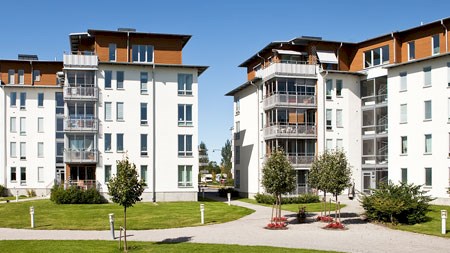Buy-to-let may not be quite the hot property of the boom years, but it has seen a resurgence in recent times.
Buy-to-let is an attractive income investment in a time of low rates and stock market volatility.
But beware the low interest rates. One day they must rise and you need to know that your investment can stand that test. Many investors who bought in the boom years struggled as mortgage rates rose before being slashed to 8.5%, the lowest prime rate in South Africa since January 1974. Interest rates will rise again!
Nevertheless, despite the potential for interest rates to rise, the current lower house prices, rising rents and improving bond deals are tempting investors once more.
If you are considering investing in property in 2018, or improving your returns on a buy-to-let you already own, it's important to do things right. Like any investment, buy-to-let comes with no guarantees, but for those who have more faith in bricks and mortar than stocks and shares, here is some advice to get you on your way.
Location, location, location
It doesn’t matter how many times you have heard it before: location remains the most important factor when buying property. When you are buying for investment, you have to look out for locations that have high rental demand.
Don't be over-ambitious
We have all read the stories about buy-to-let millionaires and their portfolios. But the days of double-digit house price rises are gone.
To compare different property values, calculate their yield: the annual net income (gross income received less expenses) divided by the purchase price, and multiplied by 100 to get a percentage.
If you can acquire a rental return that is substantially more than the bond payments, you can start saving to re-invest. Remember though that people rarely buy a property outright – and property comes with running costs, so bond costs and, agents’ fees must be worked out and they will eat into your return.
Think about your target tenant
Instead of imagining whether you would like to live in your investment property, put yourself in the shoes of your target tenant. Who are they and what do they want? If they are students, the unit needs to be easy to clean and comfortable but not luxurious. If they are young professionals, it should be modern and stylish but not overbearing. If it is a family, they will have plenty of their own belongings and need a blank canvas.
Remember that allowing tenants to make their mark on a property, such as painting, hanging pictures or taking out unwanted furniture, makes it feel more like home. These tenants will stay for longer, which is great news for a landlord.
Look further afield or fix up a property
Most investors look for properties near where they live. But your town may not be the best investment area. Cast your net wider and look at towns that are popular with families or have a sizeable university.
It is also worth looking at properties that need improvement as a way of boosting the value of your investment. Tired properties or those in need of renovation can be strongly negotiated for a better price and then spruced up to add value. This is one way that it is still possible to see a solid and swift return on your capital. However, ensure that the price is low enough to cover refurbishment and some profit to allow for the inevitable over-run on costs. A good rule to follow is the property developer’s rough calculation, whereby you want the final value of a refurbished property to be at least the purchase price, plus cost of work, plus 20%.
Shop around for the best bond
Do not just walk into your bank and ask for a bond. It sounds obvious, but people who do this when they need a financial product are one of the reasons why banks make billions in profit. If you are looking for advice, consider using a specialist bond originator, which will shop around for the best offering.
Partner with specialists
There are two areas that you need to have managed by experts: your investment and its process, and the rental. In both cases, with the right assistance and guidance, you would not be only investing in your wealth but also in your time. Make sure the property works for you, not the other way around.
Letting agents will charge you a management fee, but will deal with any problems and have a good network of plumbers, electricians and other workers if things go wrong. You can make more money by renting the property out yourself but be prepared to give up weekends and evenings on viewings, advertising and repairs.
Have sufficient capital
An investor should preferably have a safety buffer that can tide over repayments and living costs for three to six months, should the need arise. Determine the length of period you would be able to afford a vacant property and make sure your budget could handle costly maintenance problems. Expect the unexpected and be prepared.
Get the right mind-set
Buying income-producing property requires a different mindset than purchasing a home. Buying a home is an emotional purchase, whereas an investor buys a property because of its value, the income it will generate and its potential for capital appreciation. So make sure you view the property as an investment with the right perspective and the end-goal in mind.




